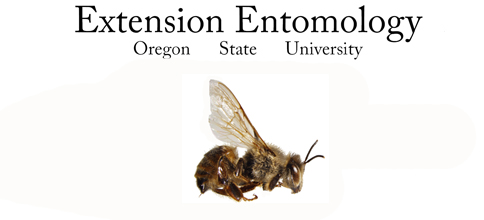Honey Bee Diagnostic Services
Chalkbrood
Causative Agent: Ascosphaera aphis (Fungus)
Range: Europe and North America
Life cycle/ Symptoms:
- Typically attacks mature larvae & pupae (young larvae only attacked during heavy infestations). Infection enters the hive via infected pollen.
- Fungus grows quickly and rapidly encloses the infected larva or pupa in fine white strands (mycelium). At this point the larva or pupa is commonly called a “mummy”.
- The mummy is originally soft and fluffy but quickly hardens to the consistency of sidewalk chalk.
- This disease is particularly hard on German black bees.
Management:
- Strong colonies will quickly remove the dead and the disease will be kept under control. However if the hive is stressed the workers may not be able to remove the diseased dead promptly.
- Many believe that this is a secondary disease that only becomes a problem in hives that are already weakened or infected with another pathogen.
- Since its introduction to the US in the 1970's this disease has become less severe. It is believed that the highly susceptible colonies were eliminated and more resistant breeds have replaced them.
- No direct control options are available but if a colony is experiencing problems you can try the following: Requeen with a young queen, move the colonies into direct sunlight, remove empty supers to reduce hive volume to allow the bees to better regulate temperature and humidity, replace wet boards for dry ones, elevate the hives to reduce moisture from contact with the ground, and/or add bees and brood from a strong colony to the weak colony to help increase numbers.
Misconceptions:
- Although hives kept in cool and moist environments seem to have a higher occurrence of this disease, dry and warm hives are not immune to this disease, colonies kept in desert environments are occasionally infected.
Other Useful Sites:
References used:
Root, A. I. (1990) The ABC & XYZ of bee culture 40 th ed. A.I Root Co. Medina, OH.
Morse, R.A. & R. Nowogrodzki (eds). 1990. Honey bee pests, predators and diseases . Cornell University Press Ithaca, NY.
printable pdf version
|
